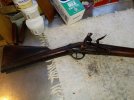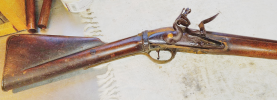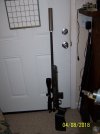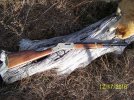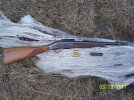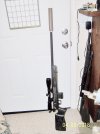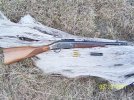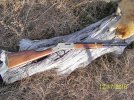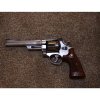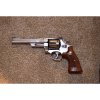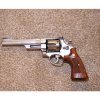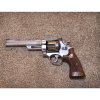JWFilips
Well-Known Member
Well I have been a Professional Commercial (Product) Photographer for 49 years now, so I know a few things that may help out when you take pictures of your guns.
For me to photograph a gun well, comes easy because of my experience with camera exposure and lighting techniques etc. (Not to mention I started working with Adobe Photoshop in 1987)
However If I were to describe it , it is quite complex, however it is simple as taking a picture outside on a day with milky skies and subdued sun. This is what a good photographer creates in his studio!.... basically Mother Nature's perfect control of light on any object! Subtile highlights provided by the subdued sun and open shadows provided the lightly overcast sky. Perfect lighting for using a camera! Here is what you must keep in mind: The human eye constantly scans an object! It can be in direct sunlight with a blue sky and it sees No Burnt out highlights and nice open dark shadows! well guess what ...The most expensive cameras can not do that! See a nice picture in bright sun and take the picture ...It will not look like you saw it! Well yes adobe Photoshop can repair that bad image your camera took and many times make it look like the image you saw with your eyes! But that is not the best way! And quality suffers!
Anyway I was thinking about starting this thread to maybe help folks here and maybe answer their problems!
GOD knows ! I knew nothing about casting until a number of the well known folks here answered my questions & thought me things and set me on the right track back in 2009!
So If you folks like this idea for an ongoing thread and bear with me I will be posting things as they come to mind!
I would also like to answer your questions about your gun photo that you are not happy with.
Jim
For me to photograph a gun well, comes easy because of my experience with camera exposure and lighting techniques etc. (Not to mention I started working with Adobe Photoshop in 1987)
However If I were to describe it , it is quite complex, however it is simple as taking a picture outside on a day with milky skies and subdued sun. This is what a good photographer creates in his studio!.... basically Mother Nature's perfect control of light on any object! Subtile highlights provided by the subdued sun and open shadows provided the lightly overcast sky. Perfect lighting for using a camera! Here is what you must keep in mind: The human eye constantly scans an object! It can be in direct sunlight with a blue sky and it sees No Burnt out highlights and nice open dark shadows! well guess what ...The most expensive cameras can not do that! See a nice picture in bright sun and take the picture ...It will not look like you saw it! Well yes adobe Photoshop can repair that bad image your camera took and many times make it look like the image you saw with your eyes! But that is not the best way! And quality suffers!
Anyway I was thinking about starting this thread to maybe help folks here and maybe answer their problems!
GOD knows ! I knew nothing about casting until a number of the well known folks here answered my questions & thought me things and set me on the right track back in 2009!
So If you folks like this idea for an ongoing thread and bear with me I will be posting things as they come to mind!
I would also like to answer your questions about your gun photo that you are not happy with.
Jim

